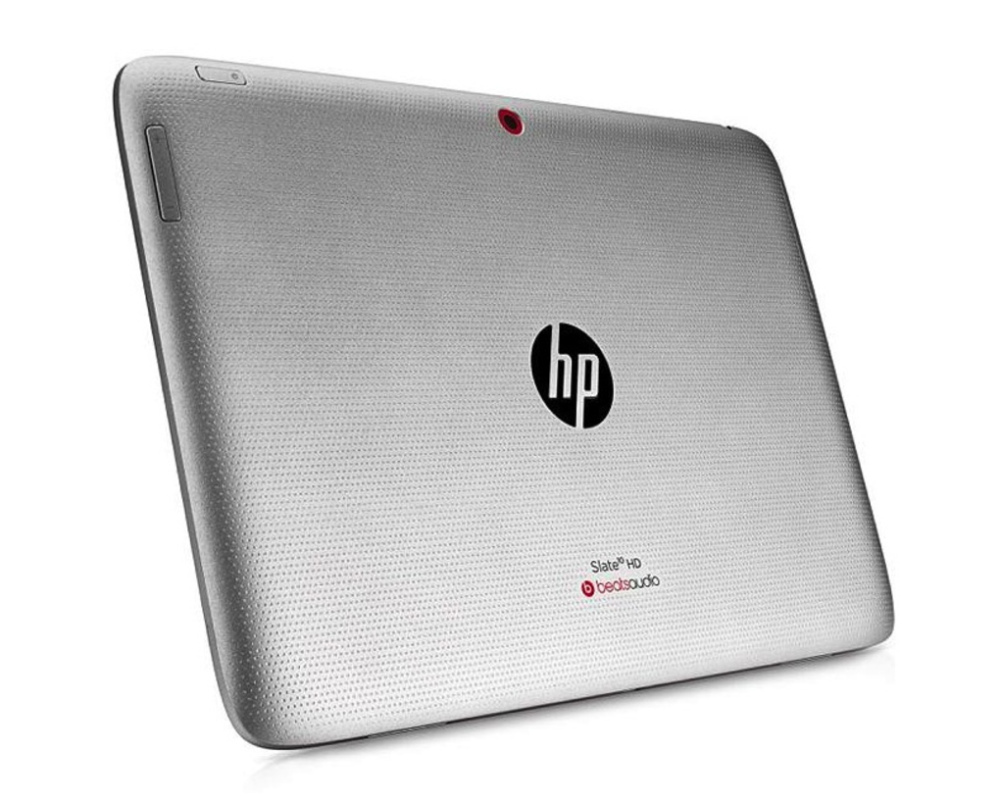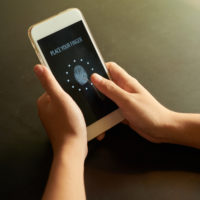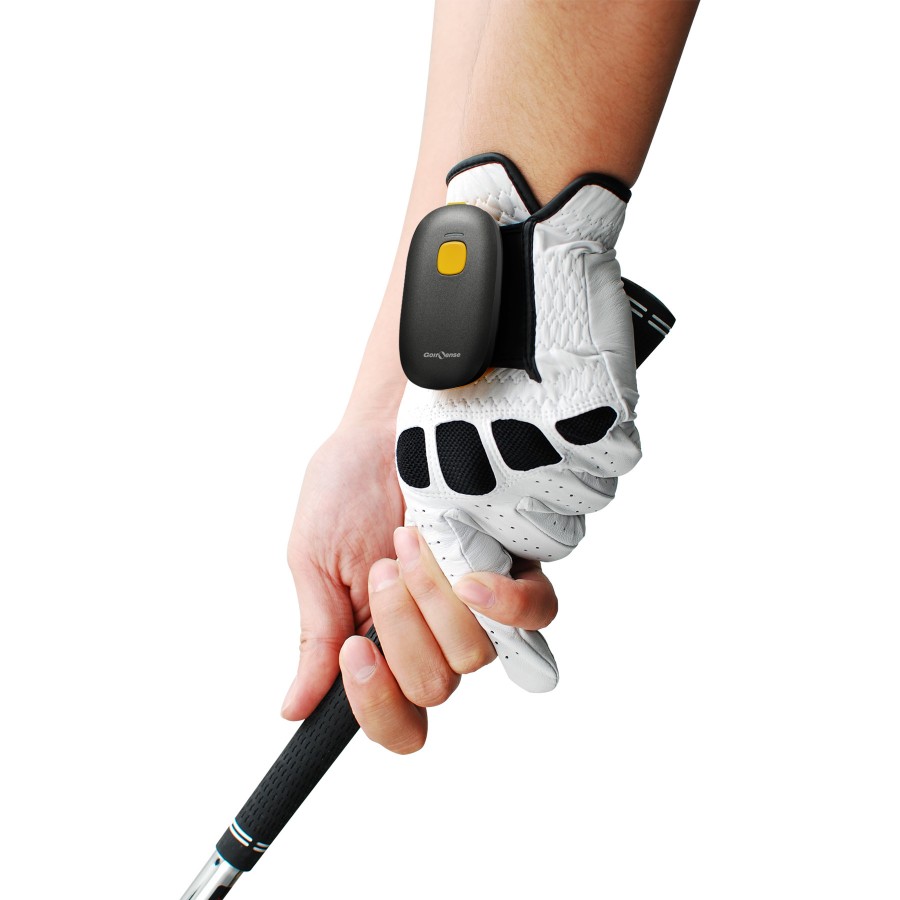
As a not-so-avid golfer, I’ll be the first to admit that I’m not awesome on the links. I try to hit the little white ball around as much as I can, but time (or lack thereof) gets the best of me and my swing. That’s when I gave the Golfsense a shot. Could it save my game?
The Golfsense, by Zepp Labs, is one of many devices popping up in pro shops that can help to analyze your swing with the help of your smartphone. How it works: You attach the Golfsense motion sensor, which is about the size of a business card and just over a quarter-inch thick, to the velcro strap of your glove. That, in essence, turns your hand into an accelerometer, which is read by your Android device via Bluetooth. The motion of your hands is captured during the swing, and compared to what the Golfsense App (available on the Google Play Store) considers an ideal set of variables – club speed, backswing speed vs downswing speed, club path, and more – and gives suggestions on what you can do to correct your swing.
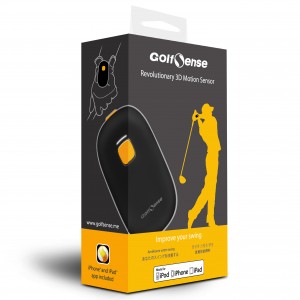
In the package you get the device, a charging cradle (the battery is internal and rechargeable), a charging cable (which is a mini-USB cable – nothing more), and some instructions. The device comes dead, I needed to fully charge it in order to sync it to my phone. Instead of including an AC adapter, you’re expected to charge it via a USB port on your favorite laptop/desktop.
The motion sensor is light. I mean, really light. When I attached it to my glove and took a few practice swings in the backyard, I barely noticed it. It was secure, and did not interfere with any aspect of my swing at all. Nice.
Once it was charged up and I had a free Saturday afternoon, I hit the driving range to give it a go. Syncing the device was mostly a snap, but that’s where things went downhill. On my first swing, I immediately got a loud beep from my phone, along with voice prompts telling me about my swing. I didn’t even listen to what my phone was saying, because I was scrambling to kill the audio as the other golfers on the range gave me raised eyebrows for messing up their rhythm. “Hello embarrassment… haven’t seen you in a while…”
Once I got into the settings to kill off the audio, I tried again. I took a few swings and went back to my phone to check how bad my swing really was. To my shock, the only thing wrong with it was my swing speed ratio. I mean, I like to think that I have a perfect swing, but I know I don’t – and there’s much more wrong than just my swing speed. So, I corrected that as it suggested, and I actually did see an improvement! More on that in a bit.
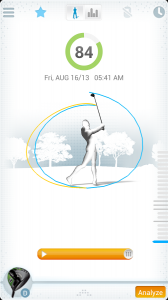 At the time, the Golfsense App was at version 2. How can I sugar coat this… well, I can’t. It was absolutely hideous. The user interface was in no way intuitive, it was hard to use, and it was just all around juvenile for what I would expect out of a $99 device. The functionality was there, but that was just about it. Based on the data the app was getting from the device and my swing, it also gave predictions about my ball trajectory and distance. Most of the time, this was wildly inaccurate. Watching my swing playback was kind of neat however.
At the time, the Golfsense App was at version 2. How can I sugar coat this… well, I can’t. It was absolutely hideous. The user interface was in no way intuitive, it was hard to use, and it was just all around juvenile for what I would expect out of a $99 device. The functionality was there, but that was just about it. Based on the data the app was getting from the device and my swing, it also gave predictions about my ball trajectory and distance. Most of the time, this was wildly inaccurate. Watching my swing playback was kind of neat however.
A few weeks later, Zepp Labs released version 3 (left), which was a huge improvement in the UI department. It now looks much more polished, without sacrificing functionality. It was, however, buggy on the basic Android programming level – issues with screen size rendering. On my Nexus 4, pop-up windows cut off important information, necessary to correctly sync the device to my phone. I stopped trying.
To be fair, there have been updates since then that I have not tried out, of which these bugs may or may not have been fixed. Either way, I would have popped it back into the box for refund before I could even worry about that.
At the end of the day, the Golfsense is a very interesting concept that I was glad to have tried out. While the little feedback I got from the app was helpful, I found that what the Golfsense really did was force me to actually think about my swing by trying to correct my faults. I was also given a sense of confidence in my swing based on the feedback; even if that feedback may have been inaccurate. I’ve concluded that my swing improved because of a kind of “placebo” effect – when I looked down at the Golfsense, I knew that I needed to keep my swing mechanics in mind. I also love the fact that I didn’t need to attach this to every club in my bag.
So, was it a swing savior, or just another bottle of golfer’s snake oil? I feel that it actually did improve my swing. If the problems I had experienced with the app were not there from the start, I might have been much more impressed. However, I do have a renewed confidence in my swing because of the Golfsense – albeit a little misplaced – and in the clubhouse at the end of a round, sometimes that’s all that matters.
The Golfsense is available now on Amazonand at most fine golf retailers. It’s also compatible with Apple devices.


